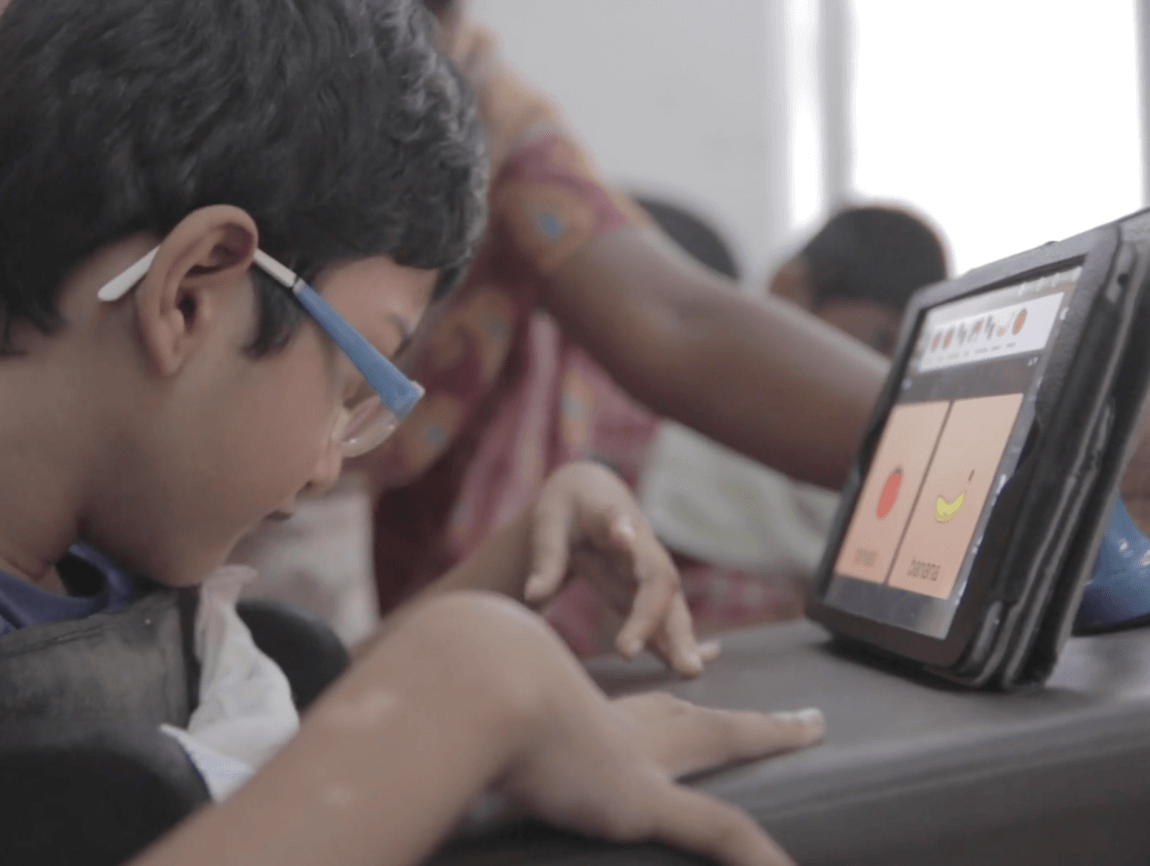Augmentative & Alternative communication devices have proven to have positive effects on people with communication deficits. What is AAC? And how can systems such as speech generating devices (SGDs) help people with limited ability to speak? Read on to find out more:
What is AAC?
Augmentative and alternative communication (AAC) is a term referring to all communication other than natural speech. This includes communication methods that supplement and substitute the natural speech and language of individuals. For people with communication difficulties and comprehension challenges, communication devices are a way to express their feelings, opinions, needs, and wants.


Types of AAC
Unaided
There is no equipment involved. Communication generally happens through sign language, vocalizations, gestures, body language, and facial expressions.
Aided
Aided systems involve users communicating using external tools. The tools can be further classified into low-tech and high-tech communication systems.
Low Tech
The use of simple tools such as a picture board falls under the low-tech category. These tools do not require electric power or electronic components for their functioning. The user’s method of conveying a message through the communication boards or books largely depends on their motor skills and physical abilities.
You can download Avaz’s low tech communication boards here.
High Tech
This comprises strategies involving the use of electronics and other technologies. This includes computers, speech-generating devices, and tablets. A communication app for iPad or Android with pictures and text is an example of high-tech system.


People with complex communication needs can benefit from using multiple communication modalities. While we want to encourage the use of robust AAC devices such as Avaz AAC to support a communicator’s progress, all modes of communication must be acknowledged to motivate communication.
Symbol and Text-Based AAC
Individuals who have difficulty communicating using verbal speech or those having language difficulties can benefit from symbol-based AAC. Symbols provide a visual representation of words and ideas. A symbol based system can help communicators gain language and literacy skills. Avaz AAC has research-based pragmatic vocabulary that consists of over 15,000 pictures. It also has a variety of high-quality voices with which a communicator can tap to form sentences quickly.


Text-based AAC involves the communicator typing to communicate. Several AAC systems support symbol as text-based AAC. This is because most communicators may begin to use symbols and then go on to type after learning to read and write. Some communicators prefer symbols even if they are literate. This is why Avaz AAC’s keyboard has the option of having pictures along with text. The Avaz keyboard also has prediction capabilities and spell check which supports emergent communicators in acquiring language skills.


The Need for Augmentative and Alternative Communication
People with complex communication needs may struggle to make themselves heard and understood.
Making friends and participating in school can be difficult for individuals with communication deficits. Their struggle to interact with peers can cause poor self-esteem and even lead to a life of exclusion and loneliness.
Their preferences are often taken for granted and intentions are second-guessed. This results in them not having agency and a sense of control.
Limited ability to speak can prevent individuals from leading fulfilling lives and from realizing their full potential.
AAC gives individuals with communication challenges a means to express their thoughts and interact with those around them. Augmentative and Alternative Communication builds choice making in individuals and sets them up to live life to their fullest potential. Individuals can gain functional communication skills and develop their language abilities. Moreover, it also allows communicators in the acquisition of literacy and increased societal participation.


Who can Benefit?
- Children and adults with speech and intellectual disabilities – non-verbal, partially verbal and single word communicators.
- Children and adults with Autism, Cerebral Palsy, Down’s Syndrome, Rett Syndrome, PDD-NOS, Aphasia, Apraxia or any other condition that affects speech.
- Adults with speech difficulties due to Throat Cancer, Stroke, Traumatic Brain Injury, and Neurological Disorders
- Children with delayed development indicators
- It supports individuals with other genetic disorders that affect speech
How Do Communication Systems help?
Augmentative and Alternative communication devices act as a communication bridge. It connects users to their support system, which includes their families, friends, therapists, and Speech and Language Professionals (SLP). The benefits include:


- Gives the ability to communicate one’s ideas and feelings
- Reduces anxiety
- Reduces behavior issues
- Increases independence
- Boosts self-confidence
- Provides access to equal opportunities at education and work
- Improves social relationships
- Improves overall Quality of Life by living a life with Dignity and Inclusion
Do you have any information to add regarding what is AAC (Augmentative and alternative communication)? Please share your ideas in the comment section below!!





